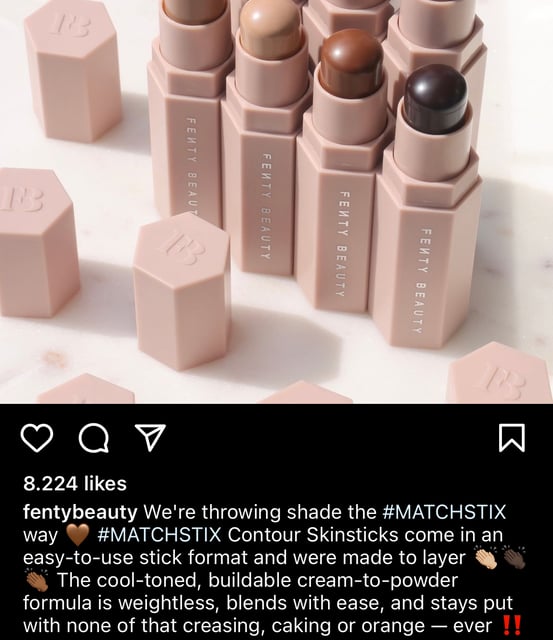How to Story-tell in Business? What? Why? How?
Ads, blogs, social media posts, reels. Yes, they’re designed to sell your brand. Even more, they’re designed to tell a story that sells your brand, business, products, and services. Hence, you can’t separate the art of selling from the art of telling—telling your business’ story. It then follows that it is pertinent to know how to communicate your brand as a key ingredient for the recipe for your business growth, even for small businesses.
Evelyn A Jegede
5/8/20245 min read
Do Small Businesses Need Branding?
There’s sometimes the misconception that branding is for bigger businesses with fatter budgets and a larger portfolio of products. However, this is simply false. In fact, building your brand while it’s in its humble stage is the best way to build the foundation for long-term growth. If you start seeing your small business as a brand, not just a business pushing out products and services, you’ve in fact already set yourself on the path to longevity. Why? It’s because branding is as crucial to short-term planning as it is to the long-term growth of your business. Don’t wait till you’re Coca-Cola big to build your brand. Build your brand now so it gives you the armour to be Coca-Cola big.


The Power of Storytelling
Do you remember the first time you heard a good story? Mine was from my dad and he would tell me these stories of hunters overcoming adversaries while hunting for survival. These stories laid the foundation for my love of nature. I also remember the first time I travelled to Rome. It was through a book. I read a book and was convinced I’d been to Rome. This is the power of storytelling. The ability to transport minds and hearts into whatever reality the narrator so pleases.


Brand Storytelling
Storytelling is the backbone of business communications. It’s not just about narrating your brand as a story, it’s about insistent and consistent communication of your brand narrative in all communication with your audiences. Why? To create the reality of your product and services being heroes in their lives. It’s also about doing it repeatedly, building blocks in the hearts till your whole brand has built a city of homes in their hearts. Those homes are your products and services that can become experiences they want to be part of to feel at home.
Brand Narrative Storytelling
You see, stories not only transport your audience into the realm of your brand, helping them make sense of you, it also helps them make sense of themselves, their needs, their pains and how your hero products and services help alleviate their pains or satisfy their needs. It builds a narrative in their hearts about a future free of that pain and unsatisfied need.
That’s why on any good day, if you asked me, I’d say marketing, branding, and selling, they’re all just business storytelling of your brand narrative.
The Art of Brand Storytelling
Syncing with your Audience
Did you know that studies show that story listeners’ brain waves quite literally sync with the mind of the storyteller? If done well, storytelling your brand allows your business to be in sync with your target audience. This is as long as you have chosen a target audience your brand, products and services are rightly matched with. You can’t fix a mismatch even with a great product/service.
So know your target audience; better still, choose the right target audience and make sure you imbibe customer language that makes them feel you are in their heads not just speaking the fantasies and need fulfilment but saying it how they’d say it. You can do this by:
Observing language in your feedback, complaints, comments and any form of communication coming from your target audience.
Talk, Listen. Listen again. Listen to your audience, at least, twice as much as you’re the one doing the talking.
Be Specific
To be able to paint a picture of a story that resonates with your ideal customers, you have to paint a picture of their problem and their pursuit of solutions. You do this by being ultra-specific, using distinguishable characteristics.
Pinpoint a specific challenge, pain point or aspiration your target audience relates to.
Agitate the problem to create a sense of urgency without giving the feeling that you want them to commit immediately. You’re courting them, after all.
Let the problem sit in the hearts and minds till they create a narrative that you’re the solution to their problem—their Prince Charming.
Propose to them at this junction because if they’ve created a story that you’re their solution, then the chances of them refusing you are next to none.
These all take into consideration that you chose the right target audience because the right target audience not only has a problem you can solve but they are able to invest in solutions.
Now, it’s time to build your brand using these 3 pillars:
Sonic branding
Visual branding
Branded copywriting
Sonic branding: This is the use of sound to express and reinforce a brand’s identity. Think Netflix—yeah, that sound. You know it.
You hear the sound and your entire body is thrust into preparation for a digital cinematic experience. Imagine you could thrust your audience into that kind of zone—for your product. Yes, you can.
Visual branding: This is using colours, visuals, shapes, and fonts to create a distinct brand visual identity.
When done consistently and strategically, even mere colours are enough to trigger brand recognition and/or product need.
Are you thirsty yet?
Branded copywriting: This is writing communications that embody a brand’s sonic state and visual identity through words that trigger imagery and sound connections. It is making sure your brand’s voice and narrative bleed into your messaging across all communication.
Fenty’s copies make it sound like Rihanna is talking, creating an experience that is both sonic and visual.
If you’re a Rihanna fan, copies like this would make you want to experience the Rihanna effect. Also, if you’re a makeup fanatic, the catchy words that are very much a generational tone of speaking will appeal to that very target audience to try them out.




No matter what, you should always use visual and branded copywriting. Sonic branding will then elevate your brand in unbelievable ways when you add it to the mix. Also, great copywriting can trigger sonic brand elements if done right.
Here’s a template on how to use all three.
Conclusion
Let’s end with this little nugget—Brand storytelling is leaving little pieces of your brand in hearts and minds. So make sure the DNA of your brand is imprinted on every piece of communication with your stakeholders from visuals, sonic communication, copies, and your product and time.
Marketing
Sales expert with preference for content, digital, social media
Management
Contact
© 2024. All rights reserved.
